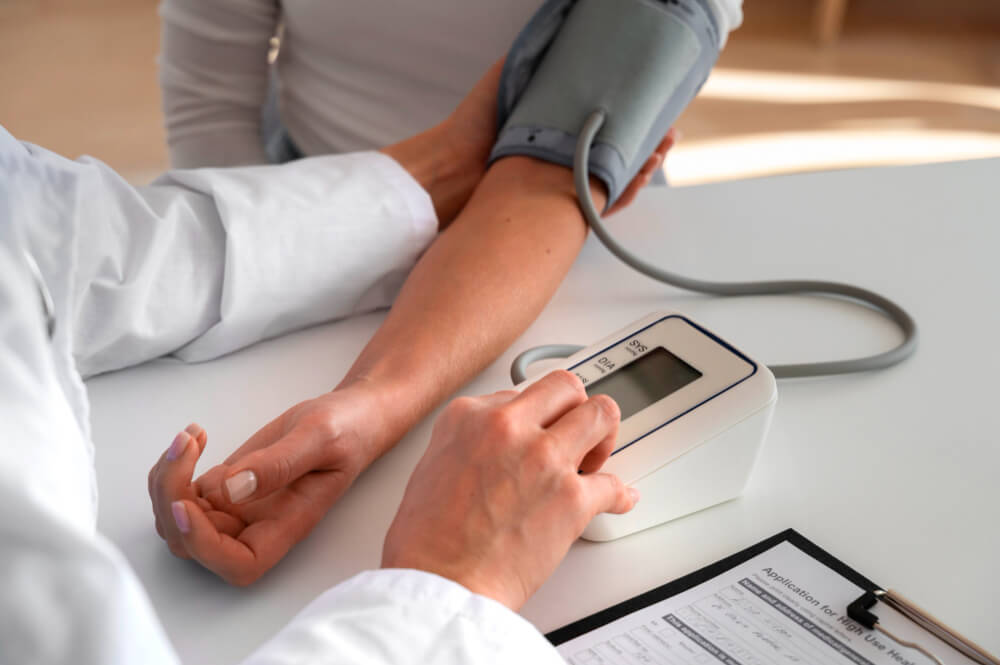Understanding and Managing Hypertension: A Comprehensive Guide
High blood pressure, also known as hypertension, is a serious health condition that affects millions of people worldwide. It is often referred to as the “silent killer” because it can develop without any noticeable symptoms for years, potentially leading to life-threatening complications. This article provides a comprehensive overview of hypertension, including its causes, symptoms, treatment options, and lifestyle changes that can help manage the condition effectively.
What is Hypertension?
Hypertension is a chronic condition where the force of blood pushing against your artery walls is consistently too high. This persistent pressure can damage your arteries over time, increasing the risk of various health problems.
There are two main categories of hypertension:
- Primary (essential) hypertension: This is the most common type, and the exact cause is unknown. It is likely a combination of genetic and environmental factors.
- Secondary hypertension: This type has a specific underlying cause, such as kidney disease, narrowed arteries, or certain medications.
Understanding Blood Pressure Readings
Blood pressure is measured in millimeters of mercury (mmHg) and is written as two numbers:
- Systolic pressure: This is the top number and represents the pressure when your heart beats.
- Diastolic pressure: This is the bottom number and represents the pressure when your heart relaxes between beats.
According to the American Heart Association (AHA), a normal blood pressure reading is less than 120/80 mmHg. Hypertension is classified as follows:
- Elevated: Systolic pressure between 120-129 mmHg and diastolic pressure less than 80 mmHg.
- Stage 1 hypertension: Systolic pressure between 130-139 mmHg or diastolic pressure between 80-89 mmHg.
- Stage 2 hypertension: Systolic pressure at least 140 mmHg or diastolic pressure at least 90 mmHg.
It is important to note that these are general guidelines, and your doctor will determine the best course of treatment based on your individual health history and risk factors.
Causes of Hypertension
Primary hypertension often develops due to a combination of factors, including:
- Genetics: Having a family history of hypertension increases your risk.
- Diet: A diet high in sodium (salt), unhealthy fats, and processed foods can contribute to high blood pressure.
- Inactivity: Lack of physical activity can increase your risk of hypertension.
- Obesity: Excess weight puts extra strain on your heart and arteries.
- Smoking: Smoking damages blood vessels and increases blood pressure.
- Alcohol consumption: Excessive alcohol intake can raise blood pressure.
- Stress: Chronic stress can contribute to high blood pressure.
- Certain medical conditions: Sleep apnea, kidney disease, and thyroid problems can also elevate blood pressure.
Secondary hypertension typically has a specific underlying medical condition that needs to be addressed for effective blood pressure management.
Symptoms of Hypertension
Hypertension is often called the “silent killer” because it rarely causes any noticeable symptoms in its early stages. However, some people may experience the following symptoms when their blood pressure is very high:
- Headaches
- Dizziness
- Fatigue
- Nosebleeds
- Blurred vision
- Difficulty breathing (in severe cases)
If you experience any of these symptoms, it’s crucial to seek immediate medical attention.
Complications of Hypertension
Uncontrolled hypertension can lead to serious health problems, including:
- Heart disease: High blood pressure is a major risk factor for heart attack, stroke, and heart failure.
- Kidney disease: Hypertension can damage the kidneys, leading to kidney failure.
- Eye damage: High blood pressure can cause damage to the blood vessels in the eyes, leading to vision loss.
- Dementia: Long-term uncontrolled hypertension can increase the risk of dementia.
- Sexual dysfunction: Both men and women can experience sexual problems due to hypertension.
Diagnosing Hypertension
Diagnosing hypertension typically involves a routine doctor’s visit. Your doctor will take your blood pressure reading on several occasions during your visit. They may also recommend additional tests, such as:
- Blood tests: These can check for underlying medical conditions that could be causing hypertension.
- Urinalysis: This can help assess kidney function.
- Electrocardiogram (ECG): This test measures the electrical activity of your heart.
- Echocardiogram: This test uses ultrasound to create images of your heart to assess its structure and function.
Treatment Options for Hypertension
The primary goal of treating hypertension is to lower blood pressure and reduce the risk of complications. Treatment options may include:
Lifestyle Changes
- Lifestyle changes are the cornerstone of hypertension management. Even moderate changes in your daily routine.


